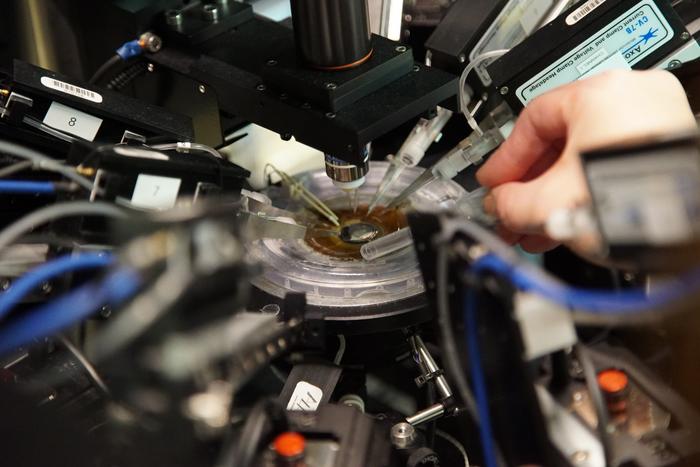Scientists at the Allen Institute’s Brain and Consciousness group and Cedars-Sinai have conducted groundbreaking research that offers an unprecedented look at how neurons respond to electrical stimulation (ES). The study, published in Neuron, reveals that different types of neurons exhibit distinct patterns of ‘syncing up’ with electrical fields, and these patterns vary depending on the rate at which the ES is delivered. These findings could help doctors fine-tune where, when, and how to apply ES to the brain for more effective treatments.
Soo Yeun Lee, Ph.D., the paper’s first author and a Senior Scientist at the Allen Institute, emphasized the significance of the study, stating, “With this study, we now have a much better idea of what types of stimulation work for specific cell classes. We can use that knowledge to develop more efficient ways of using electrical stimulation to treat disorders.”
Precision Stimulation Reveals Cell-Class-Specific Responses
The research team used tissue samples from mice and humans to deliver oscillating waves of ES within tens of micrometers of individual neurons. This extraordinary precision allowed them to observe strong, cell-class-specific responses. Excitatory neurons synchronized firing with both slow and fast stimulation frequencies, while inhibitory neurons primarily responded to fast frequencies.
These class-specific responses are significant because they reveal that adjusting the stimulation frequency allows for the selective targeting of different neurons. This discovery could lead to more precise therapies to modulate neural activity. For example, inhibitory neurons that express a protein called parvalbumin are implicated in epilepsy and cognitive dysfunctions. The study shows that these cell classes are most responsive to certain frequencies, which could help tailor ES to the most effective frequency, potentially improving outcomes and limiting side effects.
A Universal Truth About Neuron Function
Beyond its clinical implications, the study also revealed a universal truth about how neurons function. Regardless of cell class, cortical areas, or species, neurons exhibit a remarkable ability to synchronize with an external electric field. This general property is superimposed on the brain’s dazzling cellular diversity, and the newfound understanding of these underlying mechanisms could transform our approach to treating complex brain disorders.
Lee emphasized the importance of this discovery, stating, “This general property is superimposed on the brain’s dazzling cellular diversity, and the newfound understanding of these underlying mechanisms could transform our approach to treating complex brain disorders.”
The research was supported by award numbers R01NS120300 and R01NS130126 from the National Institute of Neurological Disorders and Stroke of the National Institutes of Health. The content is solely the responsibility of the authors and does not necessarily represent the official views of NIH and its subsidiary institutes.
As scientists continue to unravel the complexities of the brain and its response to electrical stimulation, studies like this one bring us closer to developing more targeted and effective therapies for a wide range of neurological disorders. By understanding the unique properties of different neuron types and their responses to specific stimulation frequencies, researchers can pave the way for a new era of personalized brain treatments.
If our reporting has informed or inspired you, please consider making a donation. Every contribution, no matter the size, empowers us to continue delivering accurate, engaging, and trustworthy science and medical news. Independent journalism requires time, effort, and resources—your support ensures we can keep uncovering the stories that matter most to you.
Join us in making knowledge accessible and impactful. Thank you for standing with us!

